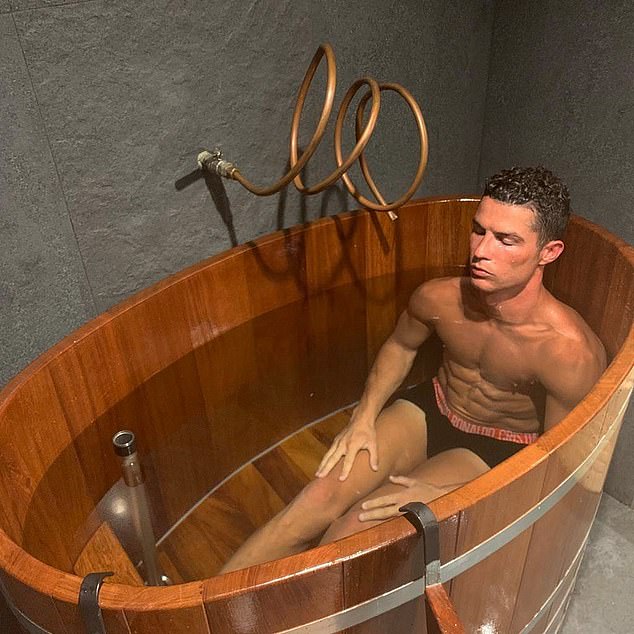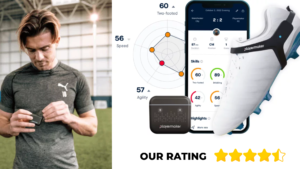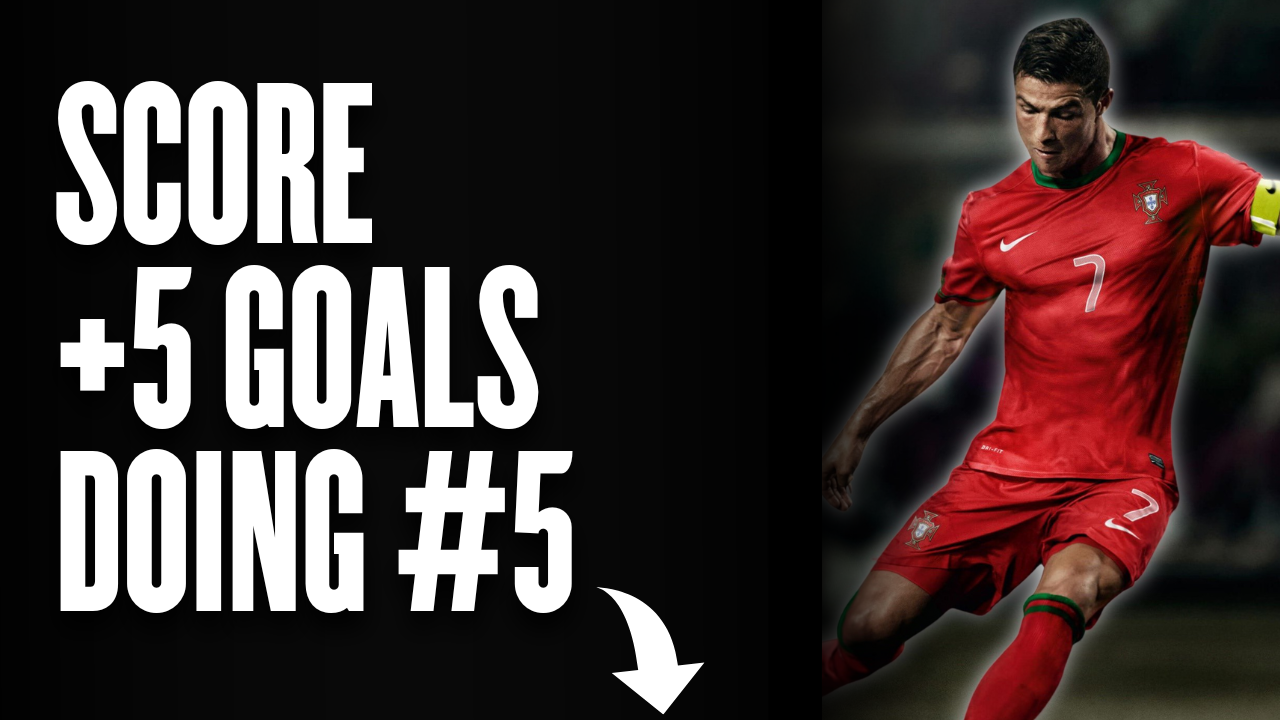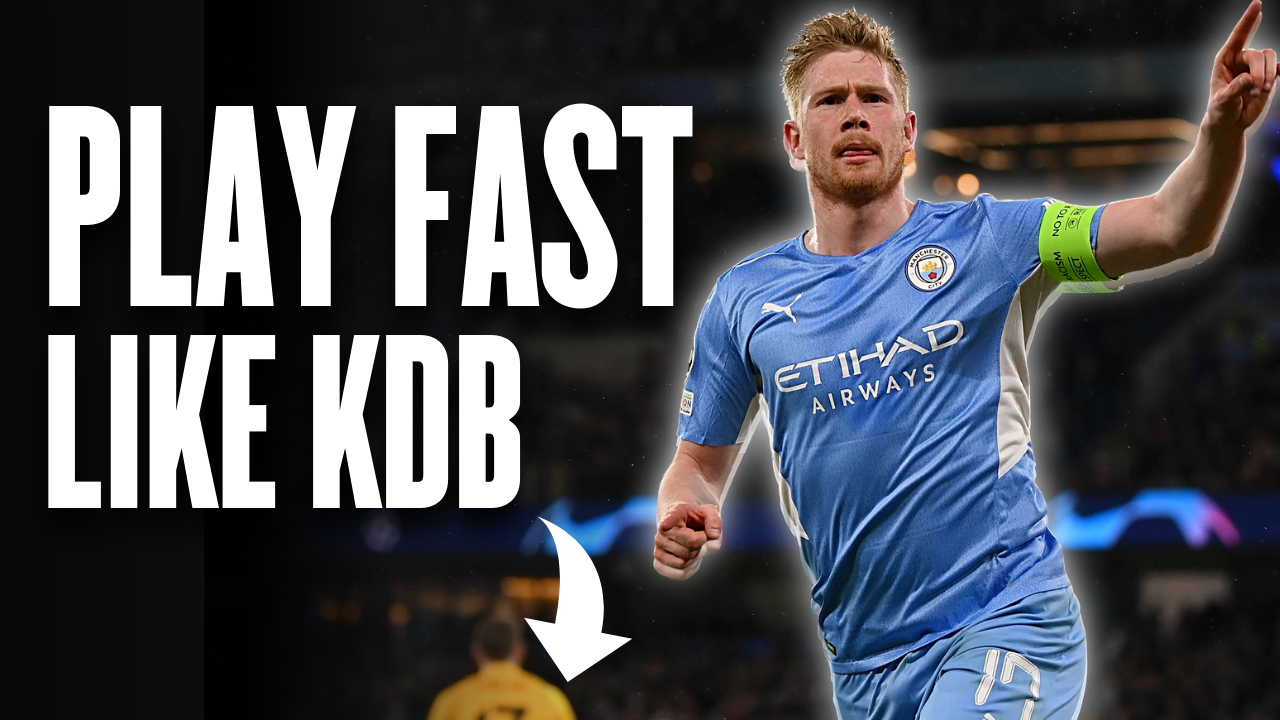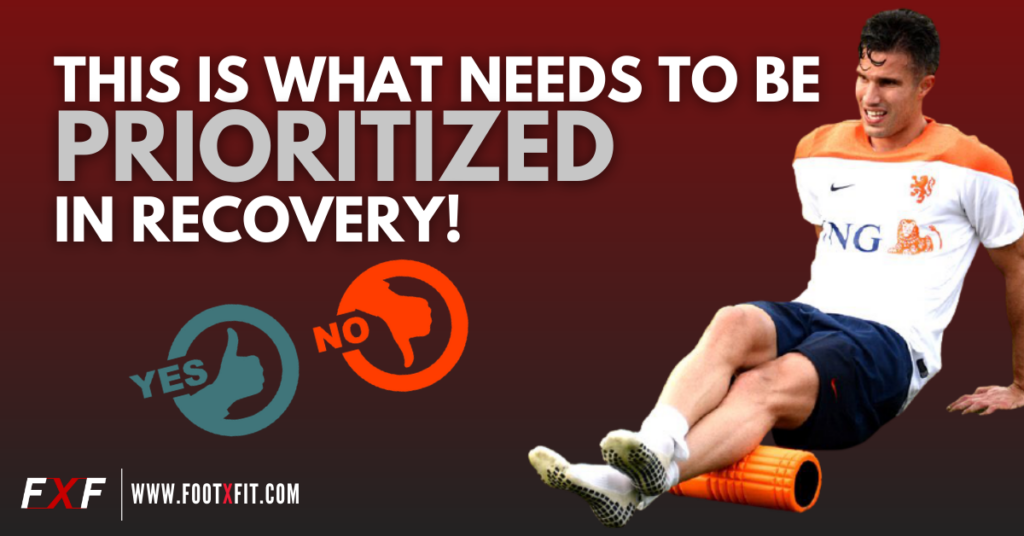
Footballers are athletes who strain their body and mind on a daily basis with the ultimate goal of maximizing their performance aka reaching their peak performance potential at the weekend. However, to achieve this goal it is not enough just to work on the field and in the gym. Performance is multifactorial. It depends on a variety of factors, some of which are controllable and some others not.
THE IMPORTANCE OF RECOVERY
ARE YOU READY TO PERFORM?
One of these factors, then, is the readiness of the player. If the player has not recovered sufficiently / well before a training session or a match, this fact will prevent him/her from reaching his peak or even not allow him/her to get close to it. Therefore, an athlete who does not prioritize his recovery is an athlete who cannot reach his peak potential. This affects two things;
- 1) The results of his training (poor performance = poor results)
- 2) His success on game-day and consequently his whole career
Today we will focus on the factors that are manageable in order to reach this coveted peak performance on the day of the game, and more specifically we will talk about the basic recovery methods that anyone can use, regardless of the team you play for or your budget.
You see, social media and the internet in general have brought us closer to all these world-class football clubs and the inconceivable budgets they have. These clubs allow us to take a look in their organization where we see footballers having daily medical and pharmaceutical support from top medical teams, physiotherapists 24/7 above their heads, saunas, cold water pools, cryochambers, recovery boots etc.
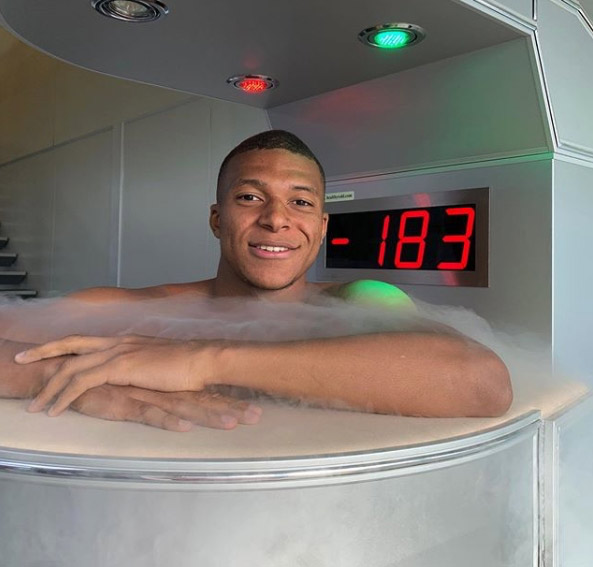
Kylian Mbappe “enjoying” his recovery in the Cryochamber 
Cristiano Ronaldo taking a cold bath doing some breath work as part of his recovery
How would you feel if I told you that all these perfect (and expensive) recovery tools contribute little to the athlete’s complete recovery? You would consider me crazy, right?
Do not misinterpret me. I am not saying that these tools are not useful. I tell you they are NOT necessary, they are NOT the basics. If you have the money, space, etc. to get a recovery tool like the ones from above, do it. It will be to your advantage. However, if you do not follow the basic recovery methods that we will analyze in this article, you are essentially throwing your money away. So simple. But let me not go into too much detail here and let’s go straight into today’s topic.
BASIC RECOVERY PROTOCOLS
Sleep
Night sleep is the most basic “tool” of recovery that can be used by anyone, athlete or not, to rest and restore the body and mind to healthy, functional levels of life and maximize its performance. Lack of sleep is directly related to decreased cognitive skills (perceive & process information) and inability to manage emotions [1]. This data suggest that sleep is (and should be) an integral part of an athlete’s recovery on a daily basis.
Optimizing your sleep
Some of the problems most footballers face are sleep deprivation, interrupted sleeping patterns, and circadian rhythm disorders (a biological clock associated with your daily sleeping schedule aka your sleep-wake-up cycle). All these criteria are both quantitative and qualitative.
Sleep Duration
Studies show that athletes should get at least 8 hours of sleep each night (uninterrupted sleep) to avoid sleep deprivation. Of course, it is worth noting that excess quantity (10+ hours) can have the opposite effect. It may lead the athlete to a feeling of drowsiness and lethargy for the rest of the day.
Other studies come to the conclusion that napping is a solution for those who are sleep deprived or who are just looking for some more hours of rest during their day. However, let’s leave the analysis of this issue for another article.
Regarding the other disorders that affect the quality of our sleep, we have the following to say.
Circadian Rhythm
The circadian rhythm essentially is a 24-hour biological clock that “keeps record” of our sleep-wake-up times. Disorders in this clock, i.e. differences in the hours we decide to sleep and/or wake up, can have negative effects on the quality of our sleep [2]. The way to deal with this problem is easier said than done. Take care of your sleep on a daily basis by sleeping and waking up at roughly the same time. Just DO it!

*As an affiliate, I'm earning from qualifying purchases without any extra charges being placed on you.
Other Sleeping Quality Factors
In addition to the above, the footballer must make sure that his sleep is uninterrupted and as deep as possible (REM Sleep – Rapid Eye Movement/Paradox Sleep is the deepest sleeping stage). Scientific data suggests that continuous, uninterrupted sleep is more likely to reach deeper sleeping levels (REM Sleep), something that is absolutely desirable for the body and mind. The more total time you spend there, the better your sleeping quality becomes. But how will our sleep acquire these quality elements?
Let’s look at some of the basics:
- Avoid drinking caffeinated beverages 10 to 8 hours before your scheduled sleeping time – that’s a rough estimate of the time needed for your body to get completely rid of the caffeine that’s rushing in your blood
- Have your last meal approximately 2-3 hours before scheduled bed-time, allowing yourself to fully digest and fall asleep in a much calmer state
- Stop exercising 2 hours before bed-time. I know this might be difficult for you if your team is training late in the afternoon. If it is manageable though, try working out/training a bit earlier
- Minimize blue light (light coming from screens) 1 hour before you fall asleep. Blue light blocks the production of melatonin, a hormone that triggers that sleepy state you get in when you’re about to sleep. There are loads of apps that block this light for you, but I would consider some alternatives like reading a book, journaling, going for a walk etc.
- If you have any thoughts, problems or dilemmas lingering in your mind, just write them down. It’s really not that great to fall asleep with thoughts that might keep you awake at night. Grab a pen and let go of them. This also greatly applies to post-match stress.
WANNA LEARN HOW TO OPTIMIZE YOUR SLEEP FOR FOOTBALL PERFORMANCE & RECOVERY? CLICK HERE!
Nutrition
Our nutrition, or diet, forms the base of the recovery pyramid (along with sleep). You are what you eat. So if you want to be an elite footballer you have to eat like one. The goal here is not only to maximize your performance but to also recover from fatigue, (minor) injuries, etc. as quickly and efficiently as possible. I am sure that those of you who have changed your eating lifestyle from bad to good have noticed huge changes, not only in your performance but also in your ability to recover fast between training and games. So let’s take look at some of the protocols that apply to the recovery-nutrition relationship.
Protein
Undoubtedly, when we talk about nutrition as a method of recovery the first thing that comes to mind is protein. For those who do not know, protein is a macronutrient necessary for various biological processes, including the repair of broken muscle tissue that occurs after intense activities. This process is called muscle protein synthesis, a process in which our body (with the help of the amino acids that make up protein) rebuilds damaged parts of muscle fiber. Proteins not only rebuild but also build. Protein is therefore important for muscle recovery and muscle gain. The recommended protein intake for an athlete is somewhere between 1.5 to 2.2 grams per 1KG/2.2LB of body weight. The exact amount depends on the individual’s goals and can be adjusted slightly depending on the activity levels of the day.
HERE’S HOW MUCH PROTEIN A FOOTBALLER NEEDS!
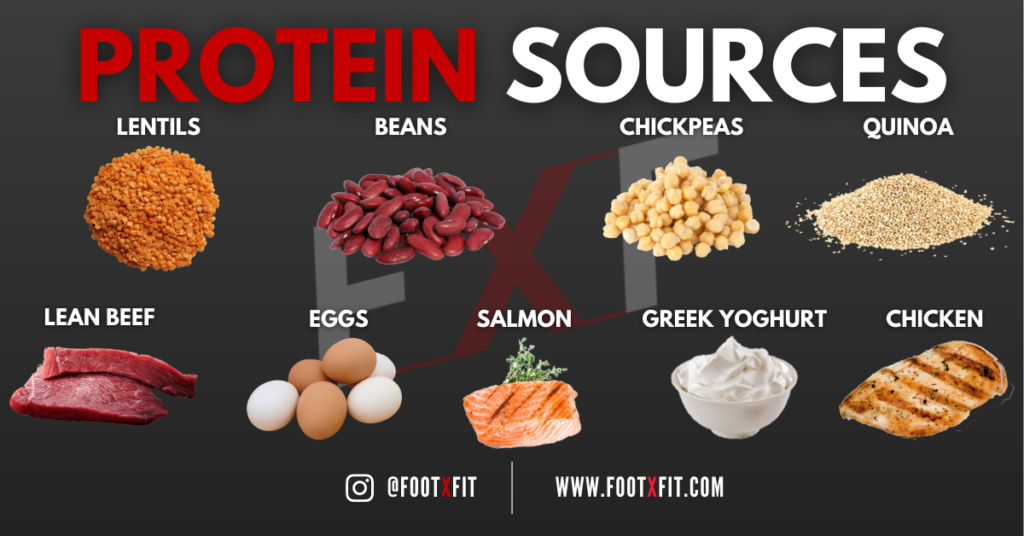
Water
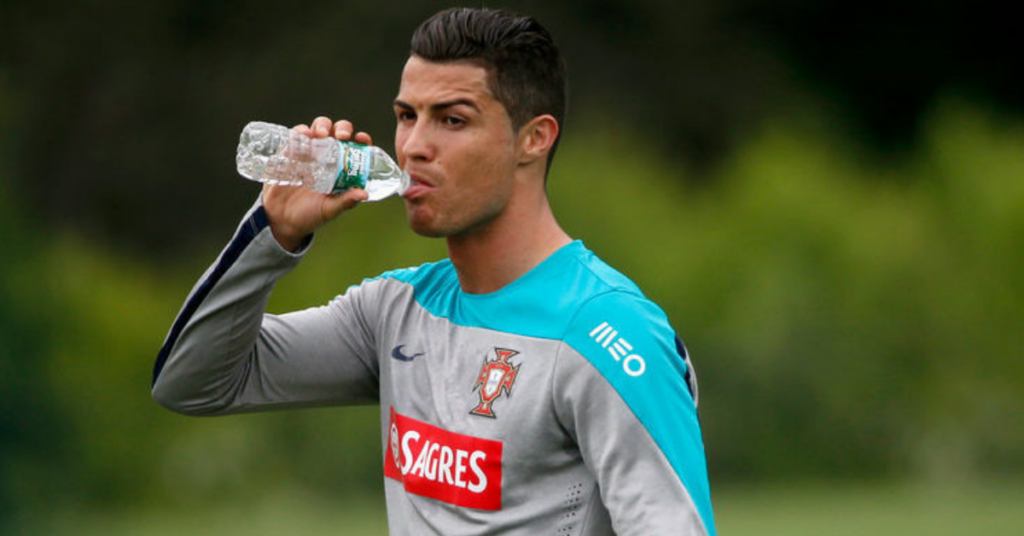
Water is a basic element of human life, necessary for the performance of its biological functions. An athlete needs about 40-60ml per 1KG/2.2LB of body weight on a daily basis. It would also be good to track your weight before and after training and to consume about 1000ml of water for each 1KG/2.2LB of body weight lost. Dehydration of the body can have devastating effects on a footballer’s life and consequently performance. A useful indicator of your hydration level is the color of your urine. A darker yellow color is a sign of poor hydration whereas a lighter yellow color is usually a sign of good hydration. On warmer days or situations of intense exercise, we recommend consuming more water sporadically during the day and training session/match.
CLICK HERE FOR AN IN-DEPTH GUIDE TO HYDRATION FOR FOOTBALL!
Other macro- and micronutrients
Finally, we could not fail to mention the carbohydrates, healthy fats, vitamins, and minerals that are equally necessary to ensure a speedy recovery. All meals of an athlete should be rich in carbohydrates for the purpose of replenishment and loading of your energy reserves (glycogen stores – the main source of energy) (choose between simple or complex carbohydrates depending on the desired result), include/cook with healthy fats and lastly, consist of a variety of fruits and vegetables (consult the color palette and make sure to include all the colors in your diet) with antioxidative properties, which make them particularly effective for recovery. A good diet is a complete and balanced diet. Recovery is NOT just protein and supplements, it’s much more than that. It’s everything you put in your mouth!
Nutritional Supplements
Finally, we have various nutritional supplements that can help the body in its recovery process, however, the emphasis should be given to real, whole foods so that the supplements are able to serve their terminology; to SUPPLEMENT our diet! These are some of the supplements you could use;
- Whey/Vegan Protein Powder
- Creatine Monohydrate
- BCAA’s
- Multivitamins
- Electrolytic Supplements
- Magnesium Tablets
- Hypo-/Iso-/Hyper-tonic Drinks
Always consult your doctor before taking any dietary supplement. If you really want to find out what deficiencies your body has, then consider a blood test. This will reveal a lot about the functions of your body and will help your doctor to prescribe you the appropriate supplements (if you need any from a medical point of view).
SUPPLEMENT GUIDE FOR FOOTBALLERS

*As an affiliate, I'm earning from qualifying purchases without any extra charges being placed on you.
Light Cardiovascular Activity
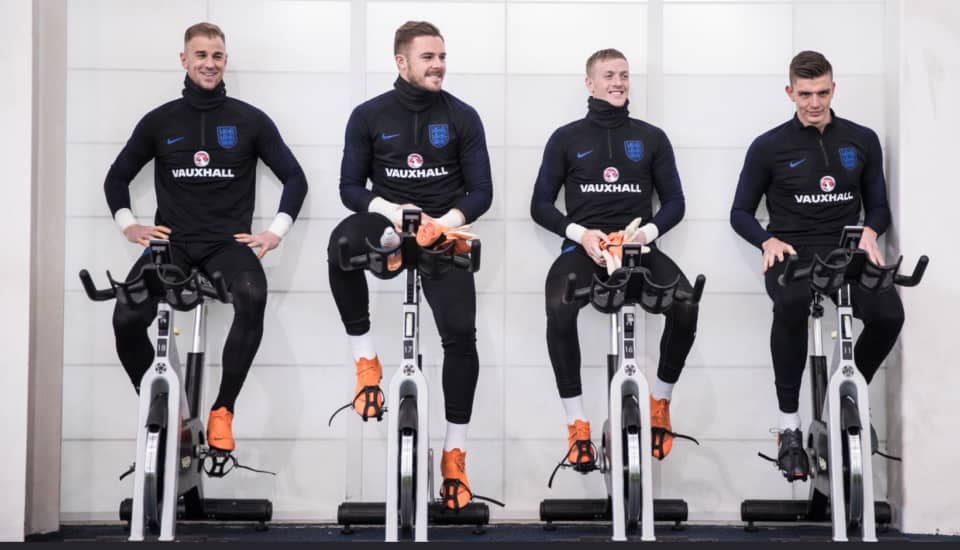
This “tool” of recovery is mainly limited to the days dedicated exclusively to recovery, without any training on schedule. These days, passive recovery should be avoided, or better yet, combined with active recovery. During active recovery, light-intensity cardiorespiratory exercise has been shown to have benefits. This is due to the increase in the amount of blood that reaches the damaged muscle cells. Blood is rich in oxygen and nutrients that are necessary for the recovery process (protein – muscle protein synthesis). The psychosomatic strain during mild intensity exercise is minimal for a footballer while the benefits for recovery are many. Jogging on grass, a stationary or elliptical bike session for 10 to 20 minutes at a light intensity is a great way to activate your muscles and increase their oxygen aka blood supply. Alternative forms include freestyle stroke swimming or even engaging in another sport, always at a moderate intensity.
I really hope this article helped you understand the value of recovery not only in sports but in life in general. Beyond that, I hope that the basic recovery protocols that are these and only these have become clear. If we were talking about anything else this would not be basic but complementary. Here’s another article we did on some extra recovery methods & tools you can utilize for recovery (click here).
If you liked this article we would really appreciate it if you shared it with anyone who needs it! If you wanna learn more about your development as a player, go ahead and explore our website!
As always, quality first!
Make sure to follow us on Instagram for daily content centered around YOUR development!
RELATED ARTICLES
- Supplementary Recovery Methods Used By Footballers
- How Much Protein Does A Football/Soccer Player REALLY Need?
- How To Recover After A Football Match | Backed By Science
- Chocolate Milk For Recovery? Everything You Should Know!
- Hydration For Football Players Made Simple | Everything You Need To Know
- 10 Dinner Ideas For Football | Meals High In Protein
- Smoothies For Footballers | This Is How To Fill Your Nutritional Gaps


